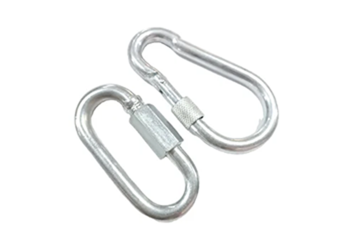Oct . 05, 2024 19:16 Back to list
carbon steel wedge anchor
Understanding Carbon Steel Wedge Anchors A Comprehensive Overview
In the realm of construction and engineering, the choice of anchoring systems is pivotal for ensuring structural integrity and safety. Among the various types of anchors available, carbon steel wedge anchors have gained significant traction due to their robustness, durability, and effectiveness in a variety of applications. This article aims to provide a comprehensive examination of carbon steel wedge anchors, highlighting their characteristics, applications, advantages, and installation techniques.
What is a Carbon Steel Wedge Anchor?
A carbon steel wedge anchor is a type of mechanical anchor used primarily in concrete applications. These anchors are designed to be inserted into pre-drilled holes and expand upon installation, providing a secure hold. The key component of this anchor is the wedge, which locks into place within the concrete upon tightening the anchor bolt. Typically made from high-strength carbon steel, these anchors are coated with materials such as zinc to enhance corrosion resistance.
Key Characteristics
1. Material Strength Carbon steel is known for its superior tensile strength, which allows wedge anchors to support heavy loads without failure. The Yield Strength of carbon steel can typically range between 58,000 to 145,000 psi, making it suitable for high-load applications.
2. Corrosion Resistance Although carbon steel is susceptible to rust, coatings such as galvanization help mitigate this risk. For environments that require enhanced corrosion resistance, stainless steel options are also available.
Applications
carbon steel wedge anchor

Carbon steel wedge anchors are commonly used in
- Industrial Settings They are ideal for anchoring machinery or large equipment where stability is essential. - Construction Often used to secure structural framing, precast concrete elements, and building facades. - Heavy-duty Fixtures They are suitable for attaching shelving, racking systems, and other fixtures that require significant load-bearing capabilities. - Outdoor Installations When properly coated, they can be used in outdoor applications such as signposts and fences, although careful consideration must be given to the conditions they will encounter.
Advantages of Carbon Steel Wedge Anchors
1. High Load Capacity The design allows for significant weight and shear load capacities, making them ideal for demanding applications. 2. Simple Installation Requires a straightforward drilling and fastening process, making them accessible even for less experienced personnel. 3. Cost-Effectiveness Compared to other anchoring options, wedge anchors offer a balance of performance and affordability, particularly for heavy-duty applications.
Installation Techniques
Installing carbon steel wedge anchors requires meticulous attention to detail to ensure effectiveness
1. Drilling Begin by drilling a hole into the concrete of the appropriate diameter and depth as specified by the anchor's manufacturer. 2. Inserting the Anchor Place the wedge anchor into the hole, ensuring that the shank is fully inserted. 3. Tightening Using a wrench, tighten the nut on the wedge anchor. This action will cause the wedges to expand and secure the anchor against the interior wall of the concrete hole. 4. Testing After installation, it’s advisable to perform a load test to ensure that the anchor holds securely under expected loads.
Conclusion
Carbon steel wedge anchors are powerful, reliable, and versatile fastening solutions in construction and industrial applications. Their unique design and strong material properties provide an effective means of securing loads while offering ease of installation and cost benefits. When installed properly, they play a vital role in the safety and stability of structures across various environments. As with any anchoring system, consideration of environmental conditions, load requirements, and proper installation techniques will lead to optimal performance and longevity of the anchoring solution.


